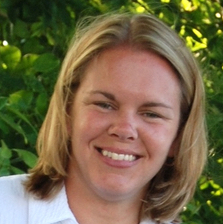Evidently corporate America needs to encourage a hacker culture to bounce back, and now local governments need hackers to help them solve their ever-increasing problems using their ever-decreasing budgets. Modeled after Teach for America, Doctors Without Borders and Architecture for Humanity, Code for America (CfA) officially launched on January 5, 2011. The brightest minds on the Internet frontier commit to an 11-month fellowship working with cities to use technology to build solutions for urban problems that are effective, cost-effective and can be duplicated in other cities around the country in the future. Could this be the beginning of a Gov 2.0 boom?
Led by board titans such as Tim O’Reilly, Clay Johnson and Jascha Franklin Hodge, Clay Shirky, and Andrew Rasiej and backed by a mix of non-profits (The Case Foundation, The Rockfeller Foundation), for-profits (O’Reilly Media, Stamen Design), and government sites (GovFresh, GovLoop), Code for America aims to make as big an impact on municipalities as its mentor organizations made on education, rural medicine, and low-income housing design and construction.
Out of 360 applications, 20 fellows were selected to work in four cities: Boston, Seattle, Philadelphia, and Washington D.C. Unfortunately, Boulder had to drop out at a late date due to a severe budget issue. The problems have been scoped and defined, but the coders will design and implement the solutions over the next year, culminating in a smooth handoff to city officials to maintain and move the solution forward from that point on.
The problems vary from city to city, but are common to other cities throughout the country. In Boston, the focus will be on education. In Philadelphia, the solution will promote communication between citizens and between citizens and city government. In Seattle, coders will concentrate on resident safety. In our nation’s capital, CfA fellows will ensure that its Gov 2.0 efforts are documented and transparent so they can be used in other cities.
How did the idea for CfA come about? Fast Company’s December 2010/January 2011 issue tells the story of the origins of Code for America. From the invention of SeeClickFix, a municipal program born out of a resident’s frustration with neighborhood graffiti, to the collaboration of an event planner and a Teach for America alum, to their first backer, Clay Johnson of the Sunlight Foundation--Code for America finally came into being. After reading several inspiring stories of municipalities benefitting from technological solutions, it’s easy to cheer for CfA and believe that it will make a substantial difference in local government issues. But will it?
Further into the article, some doubts surface about how much impact CfA and Gov 2.0 will really have. Will the coders be able to design a real-world solution that is both budget-conscious and effective? Will the solutions really make a difference? Will city officials continue to utilize the solution after the coders leave or will it eventually be abandoned when its ROI can’t immediately be measured and budget cuts keep coming? Will one high-tech solution only highlight how much the other areas are lagging behind in technology and efficient processes? Will the solution be large-scale enough to fix an issue in a city like New York or Los Angeles? The author concedes that for the movement to catch on past this initial pilot, its solutions will have to show substantial cost benefits for the cities involved. Unfortunately, initiatives like this one often pay off in hard-to-measure ways and over long periods of time, rather than in an immediate, easily quantifiable way.
Only time will show if Gov 2.0 will bring governments and citizens closer together, restore a sense of community pride, and solve city issues. Tim O’Reilly summed it up, saying, “The way I feel about it is the same way I feel about most innovations. In the short term, they don’t live up to their promise. In the long term, you see how enormous the changes are.”

Andrea Newell has more than ten years of experience designing, developing and writing ERP e-learning materials for large corporations in several industries. She was a consultant for PricewaterhouseCoopers and a contract consultant for companies like IBM, BP, Marathon Oil, Pfizer, and Steelcase, among others. She is a writer and former editor at TriplePundit and a social media blog fellow at The Story of Stuff Project. She has contributed to In Good Company (Vault's CSR blog), Evolved Employer, The Glass Hammer, EcoLocalizer and CSRwire. She is a volunteer at the West Michigan Environmental Action Council and lives in Grand Rapids, Michigan. You can reach her at andrea.g.newell@gmail.com and @anewell3p on Twitter.














